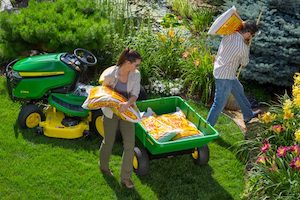As lawn owners look to get started on their planting and maintenance for the spring season, one expert at the University of Missouri Extension is offering his insight. Plant pathologist Lee Miller notes that patience will be key at the beginning of this season, especially for those applying crabgrass pre-emergent herbicides to their lawns.
“The forsythia bloom has been used as a phenological indicator on when to apply pre-emergent herbicides and it’s a fairly easy and obvious sign,” he said.
Monitoring soil temperature and waiting until it reaches 55 degrees Fahrenheit is also essential, according to Miller. This will give the pre-emergent herbicides the best chance at doing their job properly.
Miller notes that it’s important not to succumb to “white jug” disease in the spring. This can be prevented by treating a lawn with glyphosate, a nonselective herbicide.
Finally, he offers a list of lawn chores that should be tackled before the end of March. Raking leaves off of lawns is a must, along with conducting any necessary maintenance on the lawnmower before it’s put into use. Lawn owners should also be vigilant about checking for moles and covering bare spots with seeds on the lawn before April arrives.
“Be first out of the gate. April is too late,” Miller says.
For more information on how to care for your lawn during the early months of spring, visit the University of Missouri Extension at extension.missouri.edu. You can also contact the university for soil testing if you have not conducted it within the last five years.
